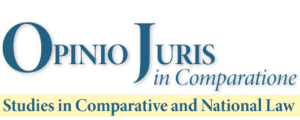ESSAYS:
The evaluation of “culturality” of assets: verification and declaration
Authors: Roberto Dante Cogliandro
ABSTRACT
This contribution starts from an overview of the complex regulatory framework on cultural heritage, with the aim of investigating the innovative impact of the new discipline, drafted with the goal to overcome the idea that, according to the category of the asset, its culturality is assumed by law. Today, in fact, there has been a tendency to evaluate the “item” without presumption, in an attempt to find a balance between the public need to guarantee the conservation, enhancement and use of the asset and the interest not to prevent nor complicate its circulation. Following these needs, in 2004 the legislator decided to put an end to the system of “lists” with the Code of cultural heritage, introducing a general obligation for the Ministry of cultural heritage to verify the cultural asset and, therefore, to declare the interest. The Code at Art. 10 proposes a list of assets that can be defined as “cultural”, of which the doctrine has proposed different classifications, among which is the one based on the relatonship between asset and the process of verification or declaration regardless of their ownership. In order to identify the assets subject to verification, in addition to the subjective criterion – based on the ownership of the asset to the State, Regions, other local public bodies as well as any other public body and institute and non-profit legal entities – other indispensable requisites are the following: a) the asset must be a work of an artist who is no longer living b) the creation must date back over fifty years if movable and over seventy years if immovable.
Keywords: Cultural Assets – Conservation – Enhancement – Use – Circulation – Code of Cultural Heritage – Declaration of Cultural Interest

